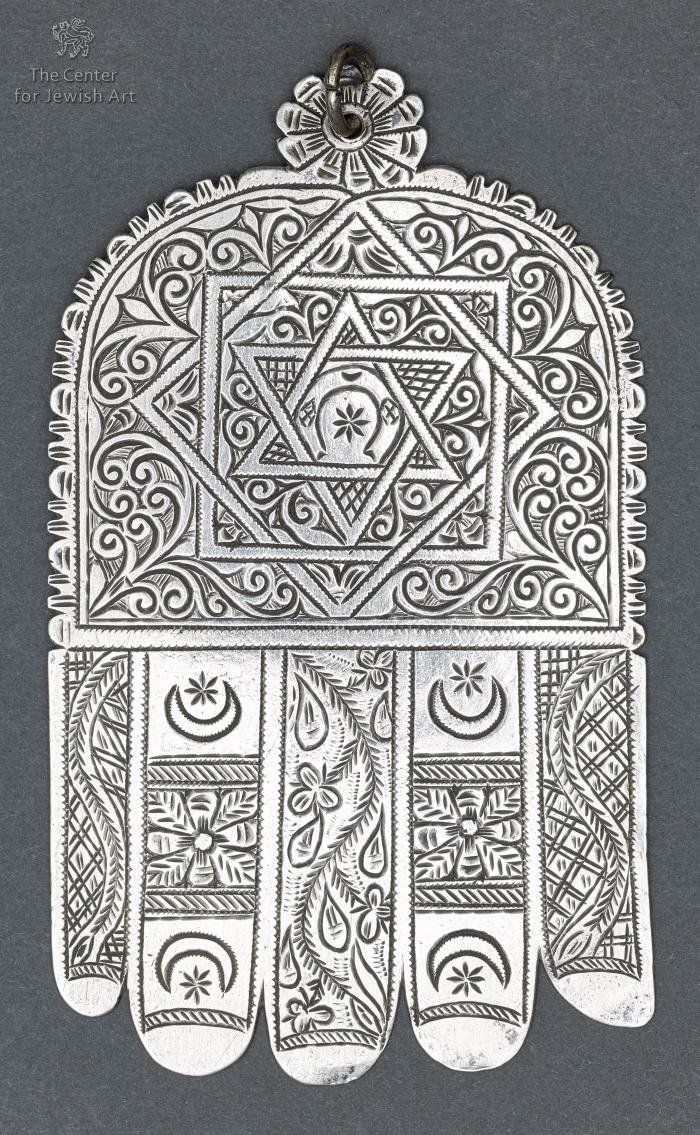Obj. ID: 35862 Amulet, Azemour, circa 1920

sub-set tree:
O | Ornamentation: | Ornament
M | Magen David
F | Flower
C | Crescent
S | Star, Eight pointed
I | Instruments and Tools | Horseshoe
|
The following description was prepared by William Gross:
From earliest times, man has tried to protect himself from misfortune by the use of objects which he considered holy or otherwise (e.g., magically) potent. Amulets and talismans are items generally worn around the neck or wrist, carried in a pocket or purse or hung on a wall. They are meant to protect or aid those who carried or wore them. The Hebrew word for amulet, kame‘a, has the root meaning "to bind". Jewish amulets are usually comprised of texts (either letters or graphic symbols) that are inscribed on some sort of material; some may also contain plant matter or precious stones. The texts of amulets usually include holy names that are believed to have the ability to affect reality, along with incantations summoning angels or other magical powers. For the most part, an amulet has a specific purpose: to ease childbirth, facilitate recovery from illness, improve one’s livelihood, and so on, but in the modern world many are also made for general protection.
This amulet, in the upper part, shows a horseshoe inside a Magen David which is in itself inside an eight-pointed star made by two intertwined squares. The symbols of a snake and star and crescent decorate the fingers below. Most of these symbols confer a general protection upon the wearer, while the renewable skin of the snake may represent the concept of renewal present in birth amulets. Silver marks on the back give the origin of this amulet as Azemour. The snake is for luck in making a living according to the Kabbalah. The eight-sided figure has eight points, eight being the symbol for infinity in Kabbalah.
The hamsa (five, as in five fingers) is an amulet shaped like a hand. The hamsa is arguably the most popular form of amulet against the Evil Eye and is used in a large number of countries. Probably originating in Moslem Spain of the 12th or 13th century, it crossed the sea to Morocco and spread across North Africa to the Middle and Far East.


